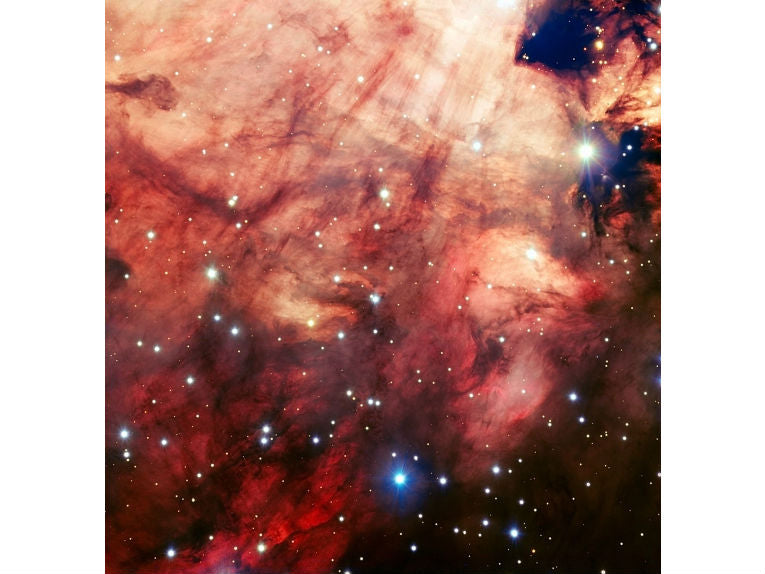A brand new magnificent image of the Omega Nebula has been taken by the European Southern Observatory using their VLT (Very Large Telescope.) The Omega Nebula is approximately 5,500 light years from earth and has a diameter of close to 15 light years, while being located in the fertile starfields of the Sagittarius region of the Milky Way.
The beautiful and eye catching array of colors have been created by mostly hydrogen gases as well as oxygen, nitrogen and sulfur to a small degree. Notice the glow of ultraviolet light being radiated by the young stars.
This incredible display of the cosmos is aptly known now as being the most gorgeous part of the universe ever caught on camera. If you notice the left of the image you'll see an enormous and enigmatic cloud of dust covering the radiant gas. This dust is what has been left over from the remains of those monstrous stars that have died and cast out material back into outer space.
The Omega Nebula has a shape that resembles the last letter of the Greek alphabet, Omega. Some see a swan with a distinctive curved and long shaped neck. Some other common nicknames are the Lobster Nebula, Crab and the Horseshoe.
The Omega Nebula was founded in around 1745, by Philippe Loys de Cheseaux .While nine years later in 1764; Charles Messier included it into his famous catalogue as number 17. Many early observers were unsure if this was distant cluster of stars or a just a cloud of gas. The debate was put to rest in 1866, when William Huggins confirmed the Omega Nebula was just a cloud of glowing gas while using his new instrument the astronomical spectrograph. The Omega Nebula establishes the crude materials and the building blocks for the future of these hot young stars.
You can see from the image the glimmering gas is only a blister venting out of the side of a much darker and larger cloud of molecular gas. The vibrant colors of gas and dark dust in the Omega Nebula create the raw materials for constructing the future generation of stars. The exquisite ribbons of dust stand out like a silhouette contrasting against the shining gas, which makes a stunning and magnificent picture.
This image (top) is courtesy of the ESO Cosmic Gems Program, and also the first one produced. I hope that they can keep up the good work and produce similar images to share with the whole world.










